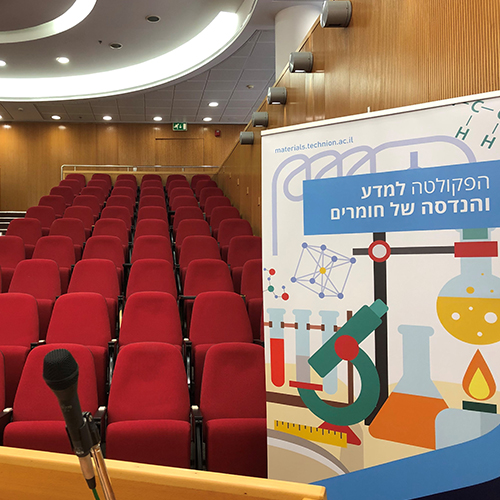
Mr. Badie Jubran - M.Sc. Candidate
08/06/2025
David Wang Auditorium, 3rd floor Dalia Meidan Bldg.
13:30
In recent decades, thermoelectric (TE) technology has proved to be useful for recovering waste heat into electrical energy in various applications, ranging from the automobile industry to space missions. Bismuth-telluride (Bi₂Te₃) is one of the prominent materials for TE applications near room temperature. Whereas much effort has focused on enhancing the TE performance of single-phase Bi₂Te₃, two-phase systems such as Bi₂Te₃-In₂Te₃ have rarely been explored. Herein, we synthesize Bi₁.₇₅₋ₓIn₀.₂₅SbₓTe₃ compounds with x =0, 0.05, 0.1, and 0.2 to form second-phase In₂Te₃ precipitates dispersed in the Bi₂Te₃-based matrix. We alloy these materials with Sb to control the precipitates’ morphology, thereby manipulating the TE transport properties of the composite. We apply diverse characterization techniques based on scanning and transmission electron microscopy, as well as X-ray diffraction, combined with measurements of the materials’ TE transport properties. We find that In-alloying forms elongated lamellar In₂Te₃-precipitates aligned along the Bi₂Te₃ {0001} basal planes. Upon Sb-alloying, Sb atoms tend to partition to the In₂Te₃-phase together with preferential substitution for In atoms in the In₂Te₃-precipitates and for Bi atoms in the Bi₂Te₃ matrix. This is manifested by increasing the interfacial atomistic mismatch between both phases, inducing lattice strains. For this reason, the precipitate morphology gradually transforms from lamellar to spheroidal with increasing Sb concentration. This affects the TE properties positively by increasing the electrical conductivity up to 360 S/cm, as well as significantly reducing the lattice thermal conductivity down to ~ 0.4 W/mK, which is primarily attributed to phonon scattering by the Sb-atoms dissolved in the Bi₂Te₃-based matrix. Our study outlines the dual role of dopants in tailoring both electronic and thermal transport as well as microstructure morphology.


